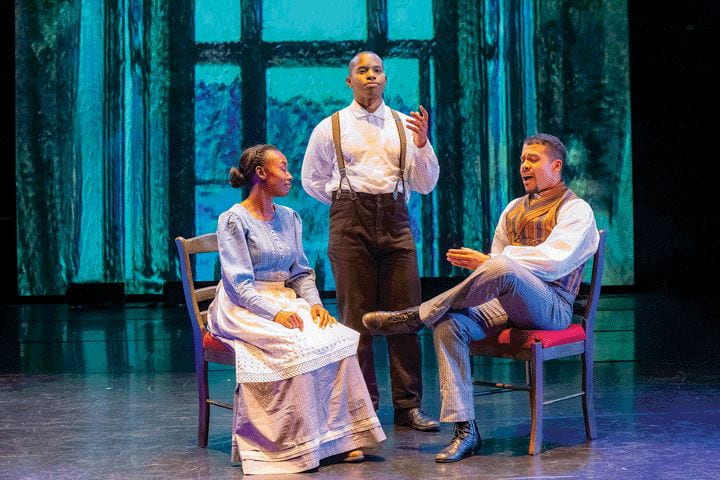Redefining dance
Recent M.F.A. grad works to integrate disabled and nondisabled performers.

Mark Tomasic was a relative latecomer to the dance world – switching his major from theater to ballet at the University of Cincinnati. What he lacked in prior training he made up for in passion and discipline.
“I went to school for musical theater but realized how much I loved dancing,” says Tomasic, a recent M.F.A. dancegraduate from UC Irvine’s Claire Trevor School of the Arts. “It was a way of capturing something that was physical and artistic at the same time, and I was fortunate to have great teachers.”
All the same, undertaking a new art form in his early 20s put him – initially – at a disadvantage among his classmates. That challenge helps Tomasic identify with the disabled dancers he now works with as an artistic consultant to the Dancing Wheels Company & School, a Cleveland-based modern dance repertory company that incorporates both nondisabled and disabled performers.
“I definitely see parallels between starting dance later in life and these dancers who have few training options because of their physical disabilities,” Tomasic says. “I bring that awareness and sensitivity to my teaching.”
He’s developing a modern dance curriculum for those with disabilities, supported by an instructional manual and DVD. The materials, he says, will allow dancers who use wheelchairs to train alongside their nondisabled peers and will offer guidance to dance teachers with disabled students.
“My long-term goal is to legitimize physically integrated dance as an art form and create an inclusive dance environment at all levels,” Tomasic says.
He and Mary Verdi-Fletcher, founding artistic director of Dancing Wheels, have been friends and occasional dance partners for 17 years. When Tomasic asked her to take part in dance science research at UCI, she immediately agreed.
Born with spina bifida, the wheelchair dancer earlier this spring joined Tomasic and M.F.A. thesis chair Jeff Russell, assistant professor of dance science, in blending art and science at the Calit2 Laboratory for Science & Health in Artistic Performance.
First, the two men measured Verdi-Fletcher’s cardiorespiratory fitness, strength and flexibility. Next, they used a six-camera motion capture system to record reflective markers placed on the dancer’s elbows, wrists, hands, shoulders, head and feet. A computer then compiled data on joint motion and acceleration speed to generate an on-screen avatar mimicking her movements.
Understanding body and wheelchair mechanics in relation to dance is vital to prevent injuries in wheelchair dancers while increasing the ease and efficiency of choreography for dancers with disabilities, Tomasic says.
In the laboratory, Verdi-Fletcher executed a series of arm gestures, turns, and forward and backward propulsions at various speeds. It was strange at first, she says, given the unconventional setting and silver markers that made her feel like “a dancing space alien.”
“I never knew not to dance,” Verdi-Fletcher says of her childhood. Her parents, former vaudeville performers, encouraged her artistic expression.
“My goal in founding ‘Dancing Wheels’ was to use dance to educate, entertain and advocate on behalf of people with disabilities,” she says. “We experiment with different facets of motion, strength, force and agility, and we present a variety of styles within a physically integrated system.”
To foster artistic collaboration between dancers with and without disabilities, Tomasic is trying to translate the movements of stand-up dancers to wheelchair dancers and create terminology for the actions of wheelchair dancers.
“Direct movement translation refers to movement of the upper body that both stand-up and sit-down dancers are able to do,” he says, “such as arm gestures and head and shoulder isolations.”
Things get more complicated when moves need to be “indirectly” translated – as with a high kick, which a wheelchair dancer might enact as an outstretched arm. Conversely, a stand-up dancer cannot execute a “wheelie” but might interpret the move by balancing on the balls of his or her feet, Tomasic explains.
He hopes the dance world can let go of entrenched biases and embrace the possibilities of comingling disabled and nondisabled performers.
“Physically integrated dance blends the power of the human body with technology,” Tomasic says. “Seeing a company like ‘Dancing Wheels’ perform has the capacity to change minds. They are making serious art at the highest level.”


